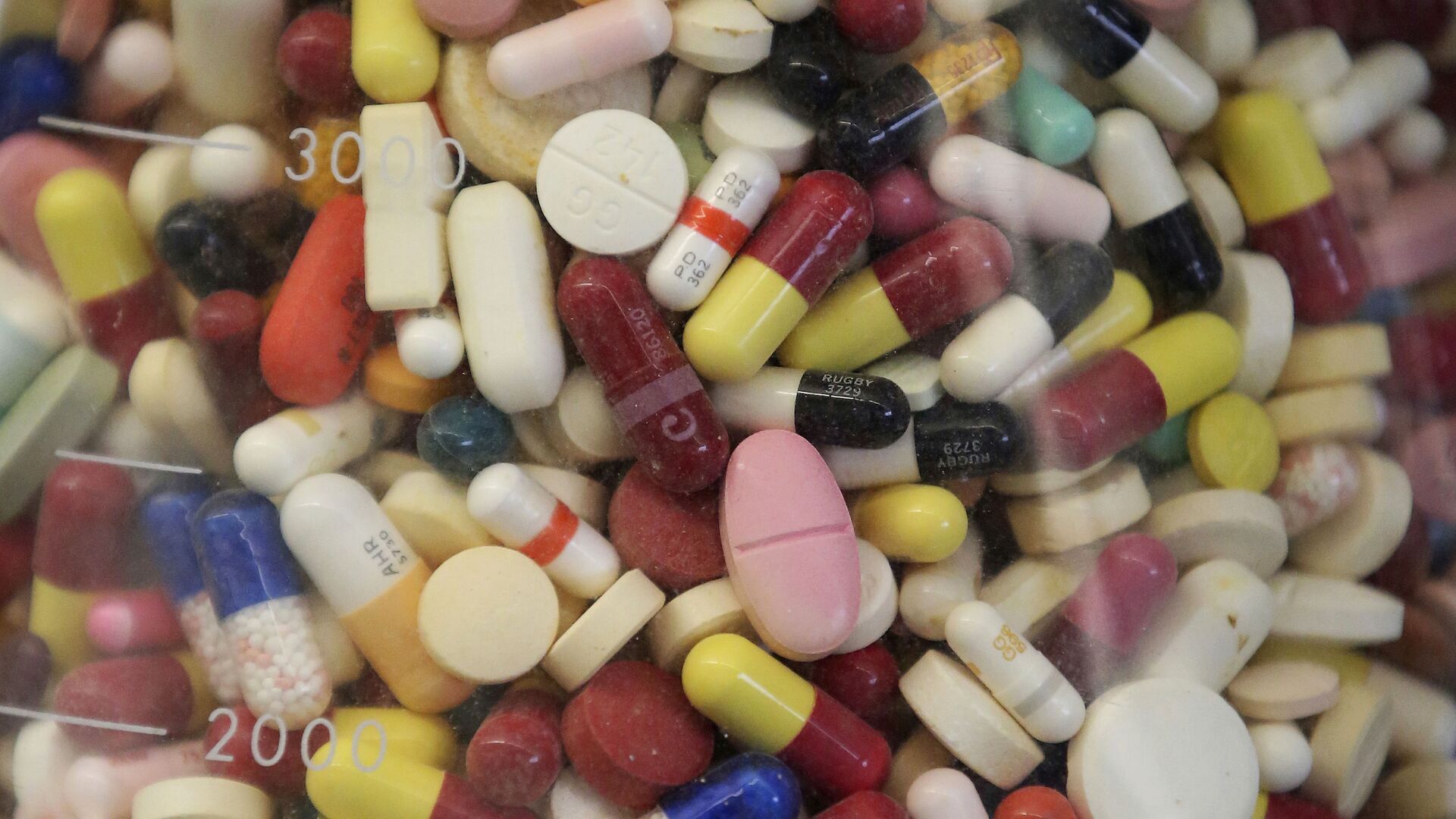https://sputniknews.in/20251116/pharmaceutical-bridge-between-moscow-and-new-delhi-from-raw-materials-to-sovereign-medicine-10071617.html
Pharmaceutical Bridge Between Moscow and New Delhi: From Raw Materials to Sovereign Medicine
Pharmaceutical Bridge Between Moscow and New Delhi: From Raw Materials to Sovereign Medicine
Sputnik India
India’s pharmaceutical industry is globally recognized for supplying affordable, high-quality medicines, earning it the title “Pharmacy of the World.” 16.11.2025, Sputnik India
2025-11-16T11:36+0530
2025-11-16T11:36+0530
2025-11-16T11:36+0530
world news
health
science & tech
india
russia
moscow
https://cdn1.img.sputniknews.in/img/07e7/06/04/2328752_0:0:3121:1756_1920x0_80_0_0_87a93fd0cae822bf58a4f9167121b06b.jpg
As New Delhi and Moscow deepen their long-standing strategic partnership—spanning defense, space, nuclear energy, and oil—experts say the two countries are now moving rapidly toward establishing a sovereign and self-reliant pharmaceutical corridor.According to industry projections, India’s pharmaceutical sector is expected to reach $130 billion in revenue by 2030, nearly double its current size. The Indian government is encouraging manufacturers to focus on developing higher value-added products to enhance global competitiveness.Dr. Arjun Mehta, Senior Fellow at the Center for Global Health Innovation, notes that pharmaceutical cooperation between Russia and India is entering a strategic new phase, no longer limited to the supply of generic drugs.One of the most critical areas for collaboration, Dr. Mehta says, is the development of joint facilities for producing active pharmaceutical ingredients (APIs). Both countries currently rely heavily on third markets—especially China—for essential raw materials.“A bilateral mechanism that ensures co-production of APIs would make the supply chain far more resilient,” he adds. “Russia can offer strong R&D capacity, particularly in chemical synthesis and vaccine development, while India brings large-scale manufacturing expertise and regulatory experience.”Dr. Mehta points out that there is also a practical opportunity to expand bilateral settlements in national currencies. Using the rupee and the ruble for pharmaceutical transactions could stabilize pricing and support long-term contracts, reducing exposure to currency volatility and external sanctions.As Russia and India navigate the shifting landscape of global supply chains, their emerging pharmaceutical partnership may play a pivotal role in shaping a more autonomous, resilient, and collaborative future in healthcare manufacturing.
india
russia
moscow
Sputnik India
feedback.hindi@sputniknews.com
+74956456601
MIA „Rossiya Segodnya“
2025
Sputnik India
feedback.hindi@sputniknews.com
+74956456601
MIA „Rossiya Segodnya“
News
en_IN
Sputnik India
feedback.hindi@sputniknews.com
+74956456601
MIA „Rossiya Segodnya“
Sputnik India
feedback.hindi@sputniknews.com
+74956456601
MIA „Rossiya Segodnya“
health, science & tech, india, russia, moscow
health, science & tech, india, russia, moscow
Pharmaceutical Bridge Between Moscow and New Delhi: From Raw Materials to Sovereign Medicine
India’s pharmaceutical industry is globally recognized for supplying affordable, high-quality medicines, earning it the title “Pharmacy of the World.”
As New Delhi and Moscow deepen their long-standing strategic partnership—spanning defense, space, nuclear energy, and oil—experts say the two countries are now moving rapidly toward establishing a sovereign and self-reliant pharmaceutical corridor.
According to industry projections, India’s pharmaceutical sector is expected to reach $130 billion in revenue by 2030, nearly double its current size. The Indian government is encouraging manufacturers to focus on developing higher value-added products to enhance global competitiveness.
Dr. Arjun Mehta, Senior Fellow at the Center for Global Health Innovation, notes that pharmaceutical cooperation between Russia and India is entering a strategic new phase, no longer limited to the supply of generic drugs.
“This is now about building a self-sufficient value chain that can operate independently of Western intermediaries,” Dr. Mehta explains. “Indian companies are considering localization of production in Russia, while Russian firms are exploring partnerships in formulation and packaging to reduce import dependency.”
One of the most critical areas for collaboration, Dr. Mehta says, is the development of joint facilities for producing active pharmaceutical ingredients (APIs). Both countries currently rely heavily on third markets—especially China—for essential raw materials.
“A bilateral mechanism that ensures co-production of APIs would make the supply chain far more resilient,” he adds. “Russia can offer strong R&D capacity, particularly in chemical synthesis and vaccine development, while India brings large-scale manufacturing expertise and regulatory experience.”
Dr. Mehta points out that there is also a practical opportunity to expand bilateral settlements in national currencies. Using the rupee and the ruble for pharmaceutical transactions could stabilize pricing and support long-term contracts, reducing exposure to currency volatility and external sanctions.
“If both sides commit to harmonized standards and a shared regulatory framework,” Dr. Mehta says, “the result could be a truly sovereign pharmaceutical corridor — one that meets domestic needs while offering globally competitive affordability and reliability.”
As Russia and India navigate the shifting landscape of global supply chains, their emerging pharmaceutical partnership may play a pivotal role in shaping a more autonomous, resilient, and collaborative future in healthcare manufacturing.

